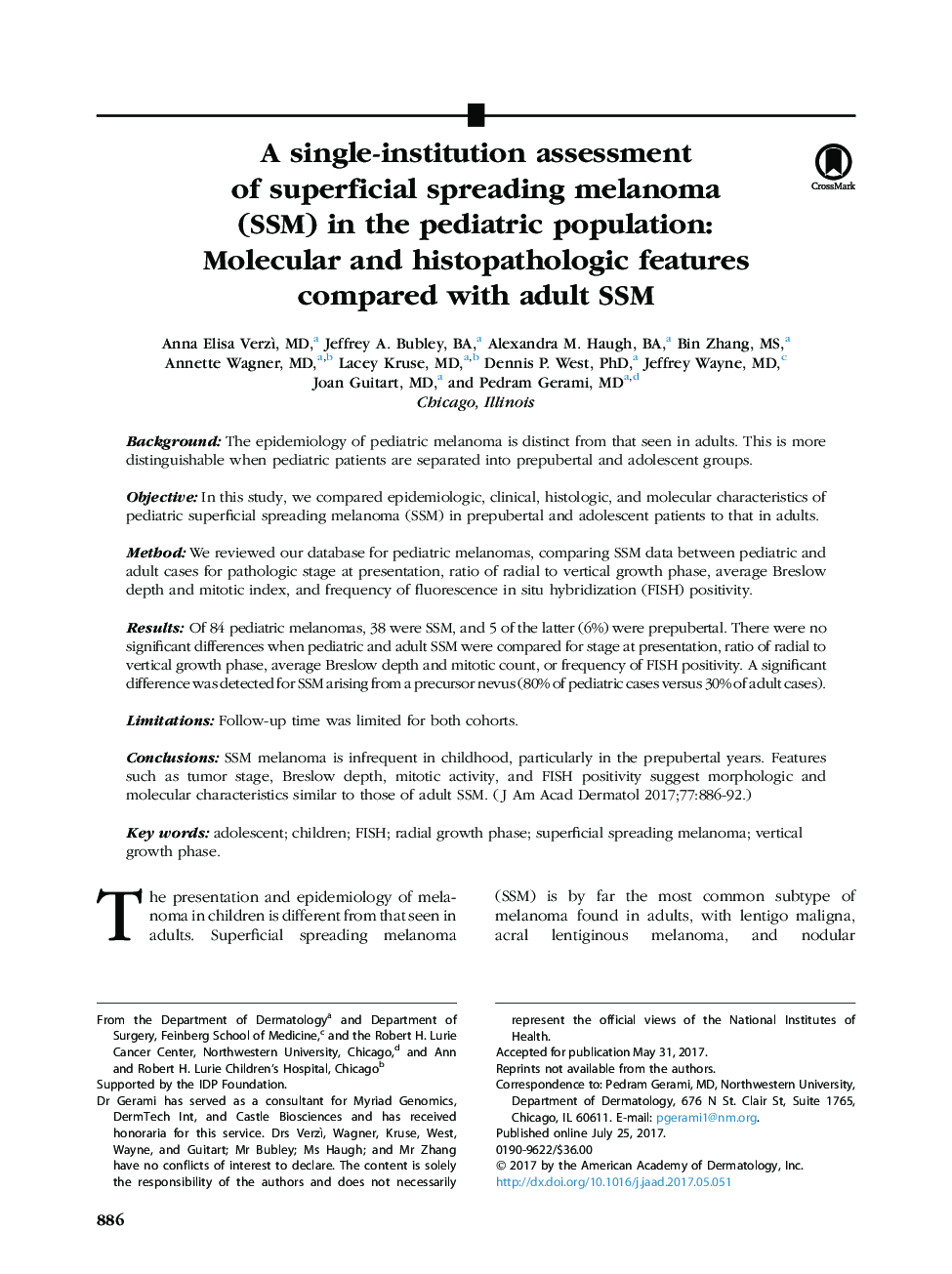| Article ID | Journal | Published Year | Pages | File Type |
|---|---|---|---|---|
| 5647689 | Journal of the American Academy of Dermatology | 2017 | 7 Pages |
BackgroundThe epidemiology of pediatric melanoma is distinct from that seen in adults. This is more distinguishable when pediatric patients are separated into prepubertal and adolescent groups.ObjectiveIn this study, we compared epidemiologic, clinical, histologic, and molecular characteristics of pediatric superficial spreading melanoma (SSM) in prepubertal and adolescent patients to that in adults.MethodWe reviewed our database for pediatric melanomas, comparing SSM data between pediatric and adult cases for pathologic stage at presentation, ratio of radial to vertical growth phase, average Breslow depth and mitotic index, and frequency of fluorescence in situ hybridization (FISH) positivity.ResultsOf 84 pediatric melanomas, 38 were SSM, and 5 of the latter (6%) were prepubertal. There were no significant differences when pediatric and adult SSM were compared for stage at presentation, ratio of radial to vertical growth phase, average Breslow depth and mitotic count, or frequency of FISH positivity. A significant difference was detected for SSM arising from a precursor nevus (80% of pediatric cases versus 30% of adult cases).LimitationsFollow-up time was limited for both cohorts.ConclusionsSSM melanoma is infrequent in childhood, particularly in the prepubertal years. Features such as tumor stage, Breslow depth, mitotic activity, and FISH positivity suggest morphologic and molecular characteristics similar to those of adult SSM.
